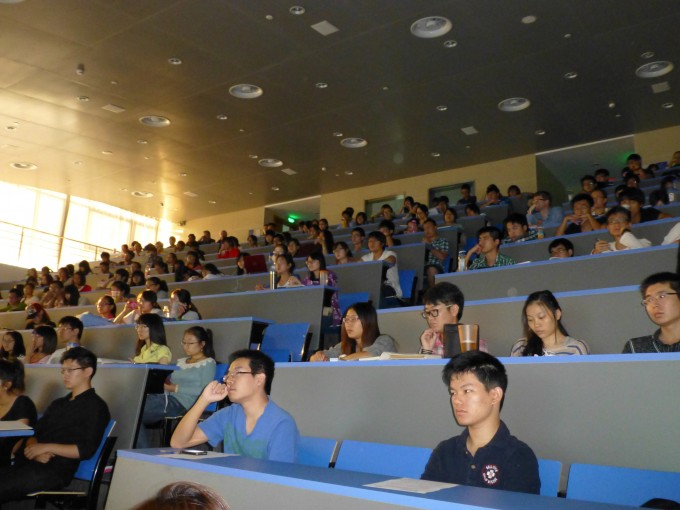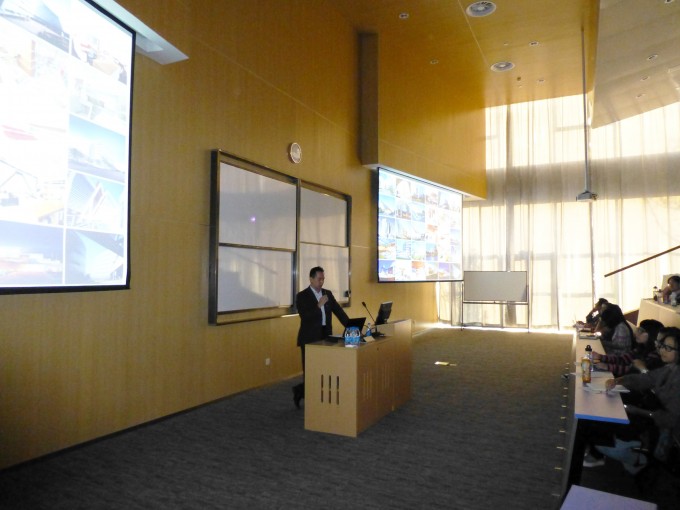By Raymond Pan, AIA, LEED AP, Design Principal
The First People’s Hospital in Shunde is making a splash with design professionals internationally, especially in China. In addition to the hospital being designated as an official pilot project for green hospitals in China, Professor Chen of Xi’an Jiaotong University is publishing a first major book in China on international green hospital buildings that features the project. Three weeks ago, Xi’an Jiaotong-Liverpool University invited me to give a lecture to the students at the Department of Architecture and Urban Planning and Design. The faculty and students were particularly interested in the First People’s Hospital and other recent international design competitions that HMC entered and were selected as finalists. The lecture was very well received and attended by more than 150 students and faculty.

Taking a cross section through HMC’s recent body of works, the element of time seems to play a key role in our design process and building purpose. Therefore, the title of my lecture was” Time, The Fourth Dimension of Architecture.” Time is inherently captured through the lens of architecture. This dimension is evident in the Taiwan Tower’s purpose in engaging the history of the place, Kaohsiung Cruise Terminal’s critical time management/flow strategies for 2,500 travelers at any moment, the Frontier Project’s concept of timeless evolution, and the First People’s Hospital’s embodiment of treatment/care sequence into the healing environment. Beyond its initial formation, it is critical to recognize that a building inevitably continues to harmonize, stimulate, enhance, interpret, and acquire new meanings over time. The manifestation of time captured through building design is capable of creating purposeful references as well as physical transformations of the user experience. The lecture shares various explorations of using this fourth dimension of architecture to create sustainable, contextual, and healing design. The lecture also exams the current status of China’s rapid urbanization and urges the design professional to anticipate more sustainable approaches to the design of cities and buildings amidst the ongoing hyper urban development in China. Rather than continuing to hastily create new cities that are often clones of western urban model models, one should consider designing cities that anticipate continuing evolution, adapt to existing/historical urban fabric, and form relevant regional context.

